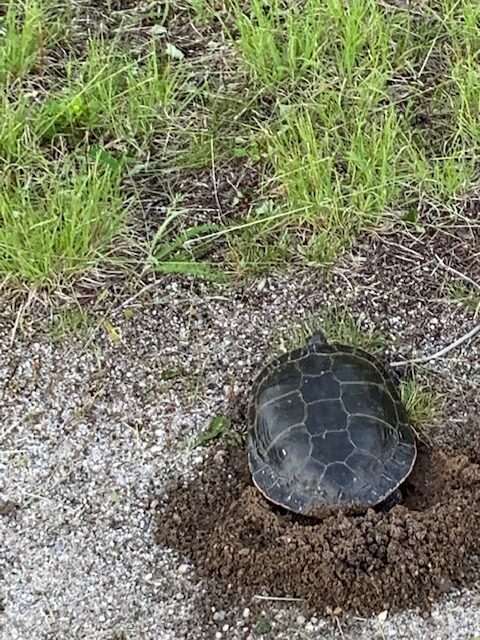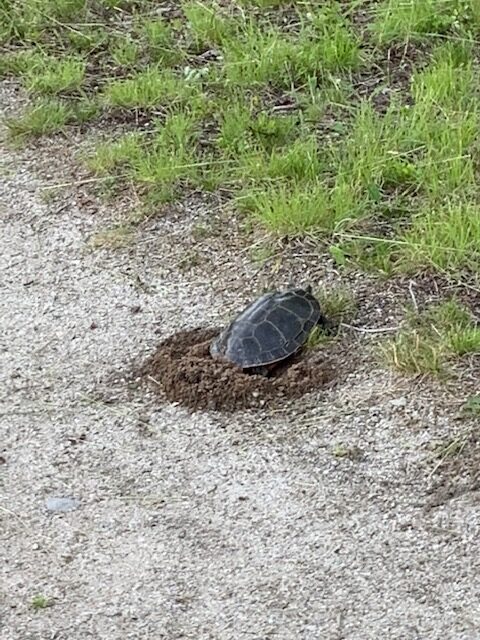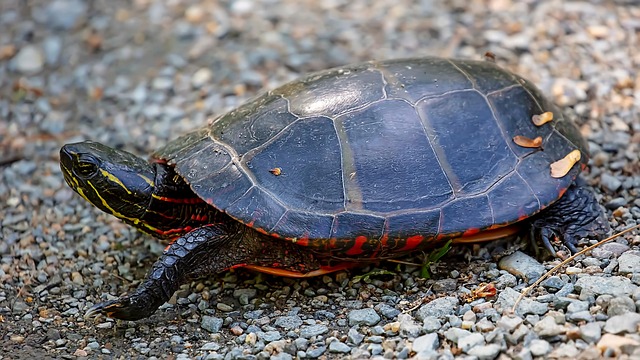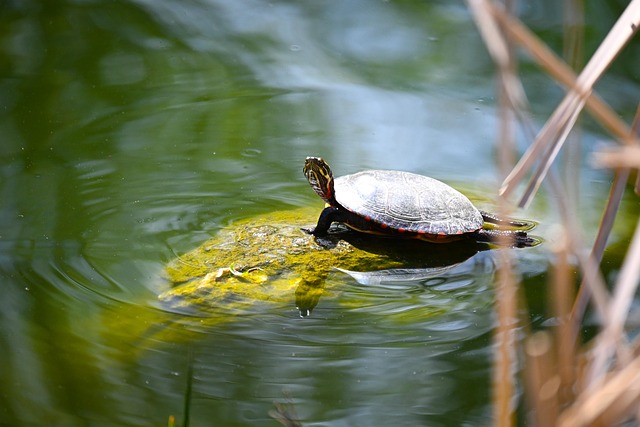I earn commissions if you shop through the links below at no additional cost to you.
Last Updated on February 7, 2025 by Jeremy
I never really thought about turtles living in Canada. I figured they were mostly warm-climate reptiles, hanging out in the tropics, soaking up the sun. That was until I witnessed something incredible—a Western Painted Turtle laying her eggs in a hole she dug near a pond in British Columbia.


I wasn’t the only one fascinated. My daughter, a reptile lover, dropped everything and ran over to watch (from a distance, of course). That one moment got us thinking:
- Where do painted turtles actually live?
- How do they survive in colder climates?
- Where can travelers go to see them in the wild?
Turns out, painted turtles are one of the most widespread freshwater turtles in North America—from southern Canada all the way to northern Mexico. And if you’re a nature lover, wildlife photographer, or just someone who wants to experience them in their natural habitat, there are some incredible places to see painted turtles in the wild.
Let’s dive into the world of painted turtles, where they live, how they survive, and where you can plan your next outdoor adventure to spot these fascinating reptiles.
Where Do Painted Turtles Live?

Painted turtles thrive in slow-moving freshwater environments—think ponds, marshes, lakes, slow rivers, and wetlands. They prefer shallow water with soft, muddy bottoms, where they can dig in and bury themselves during winter.
While Canada is home to three subspecies, their range extends across the entire United States and into northern Mexico.
Here’s where you’ll find different subspecies of painted turtles:
🟡 Western Painted Turtle (Chrysemys picta bellii) – Found in British Columbia, Alberta, Saskatchewan, Manitoba, and down into the western U.S.
🟡 Midland Painted Turtle (Chrysemys picta marginata) – Mostly in the Great Lakes region (Ontario, Quebec, Michigan, New York, and surrounding states).
🟡 Eastern Painted Turtle (Chrysemys picta picta) – Found in eastern U.S. (Virginia, Carolinas, New England) and parts of Nova Scotia & New Brunswick, Canada.
🟡 Southern Painted Turtle (Chrysemys picta dorsalis) – The smallest subspecies, found mainly in Texas, Louisiana, and parts of Mexico.
The diversity of their habitat makes them one of the most adaptable turtles in North America. Whether you’re kayaking through Florida’s Everglades, hiking in Ontario’s national parks, or camping near a quiet prairie lake in Saskatchewan, there’s a chance you’ll spot one basking in the sun.
Top 5 Places to See Painted Turtles in the Wild
If you’re up for a nature-based adventure, here are some of the best places to spot painted turtles in their natural habitat.
1. Point Pelee National Park (Ontario, Canada)
📍 Why Visit? This park is famous for turtle sightings in spring and summer, when painted turtles emerge to bask in the sun. The wetlands and marshes create a perfect turtle habitat.
🚣 Best Way to Explore: Rent a kayak or canoe and paddle through the marsh boardwalk for a close-up look at turtles, herons, and even bald eagles.
🌿 Book a Stay Nearby: Find Hotels & Lodging in Ontario
2. Everglades National Park (Florida, USA)
📍 Why Visit? One of the most biodiverse wetlands in the world, home to painted turtles, alligators, and countless bird species.
🚤 Best Way to Explore: Take an airboat ride or kayak tour through the mangroves and slow-moving waters where turtles thrive.
🏨 Where to Stay: Find Florida Hotels & Eco-Lodges
3. Algonquin Provincial Park (Ontario, Canada)
📍 Why Visit? One of Canada’s best places for wildlife photography, with painted turtles, moose, and loons.
🏕️ Best Way to Explore: Set up camp near a quiet lake or take a canoe trip through the park’s interior waterways.
🏡 Lodging Nearby: Explore Hotels & Cabin Rentals
4. Great Smoky Mountains National Park (Tennessee/North Carolina, USA)
📍 Why Visit? This park is one of the most visited in the U.S., with rich biodiversity, including painted turtles in slow-moving streams and ponds.
🌲 Best Way to Explore: Take a hiking or nature photography tour through wetlands and quiet rivers where turtles thrive.
🏕️ Lodging: Find Cabins & Lodges Nearby
5. Baja California Wetlands (Mexico)
📍 Why Visit? The southernmost range of painted turtles, with warm weather year-round. Perfect for wildlife enthusiasts and photographers.
🚣 Best Way to Explore: Kayak through coastal lagoons and mangroves, spotting turtles and exotic birds.
🏨 Stay Nearby: Find Mexico Eco-Lodges & Resorts
What Do Painted Turtles Eat?

In the wild, painted turtles are omnivores, meaning they eat both plants and small animals.
🐟 Young turtles prefer protein—eating insects, tadpoles, and small fish.
🥬 Adults eat more plants, algae, and water lilies.
☀️ Basking in the sun helps them digest food faster.
If you plan to keep one as a pet, they need a varied diet with turtle pellets, leafy greens, and occasional protein.
Turtle-Watching & Wildlife Photography Gear
If you’re heading out to observe painted turtles in the wild, here’s what you’ll want to bring:
- 🦺 Waterproof Binoculars – See Turtles from a Distance
- 📸 Wildlife Photography Camera – Capture Painted Turtles in the Wild
- 🚣 Lightweight Kayak – Best Kayaks for Exploring Wetlands
- 🥾 Hiking Shoes for Wetlands – Find Waterproof Hiking Boots
Final Thoughts

Painted turtles are one of the most widespread freshwater turtles in North America, and they’re surprisingly easy to spot if you know where to look.
Whether you’re kayaking in Canada, hiking in the Smoky Mountains, or exploring the Everglades, you have a great chance to see these incredible reptiles in the wild.
So, next time you’re out on an adventure, keep an eye out for a little turtle basking on a log—you might just have a once-in-a-lifetime wildlife experience.
🐢 Where have you spotted painted turtles? Let me know in the comments!

Leave a Reply